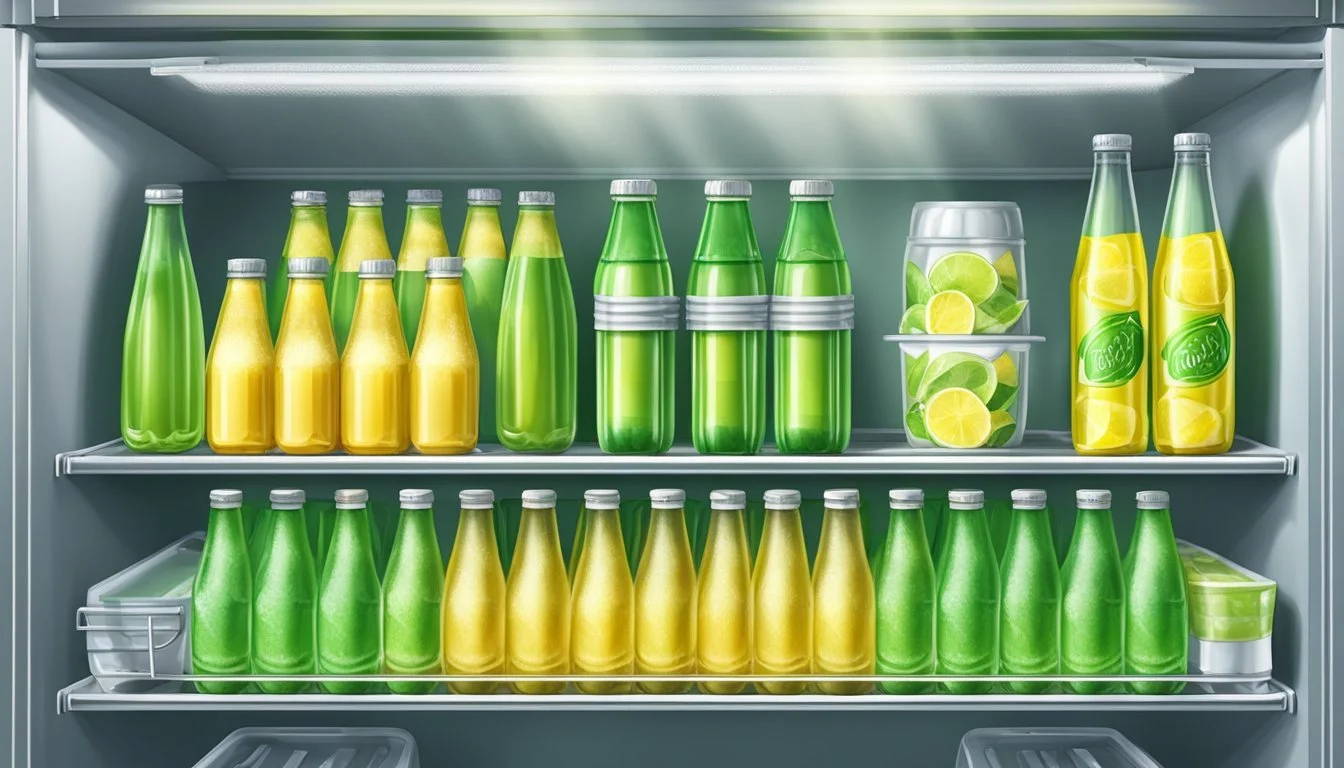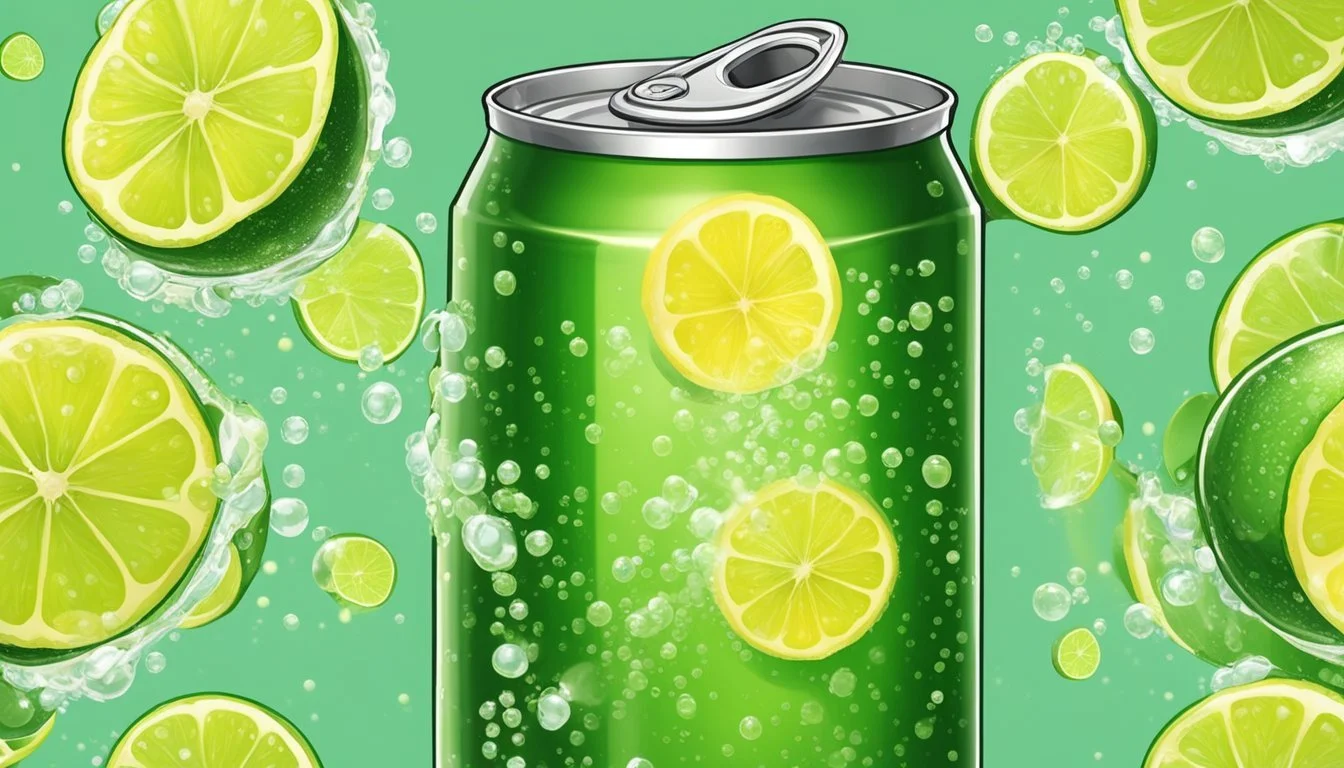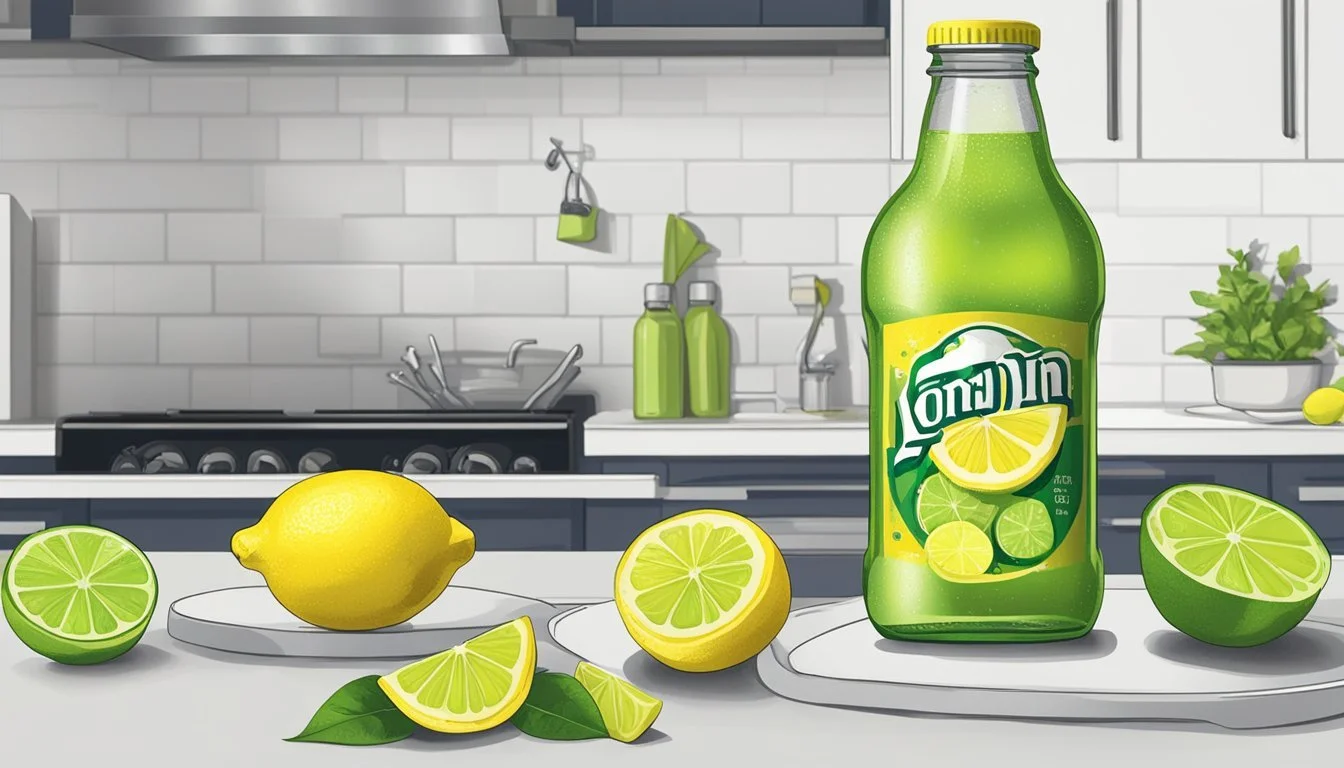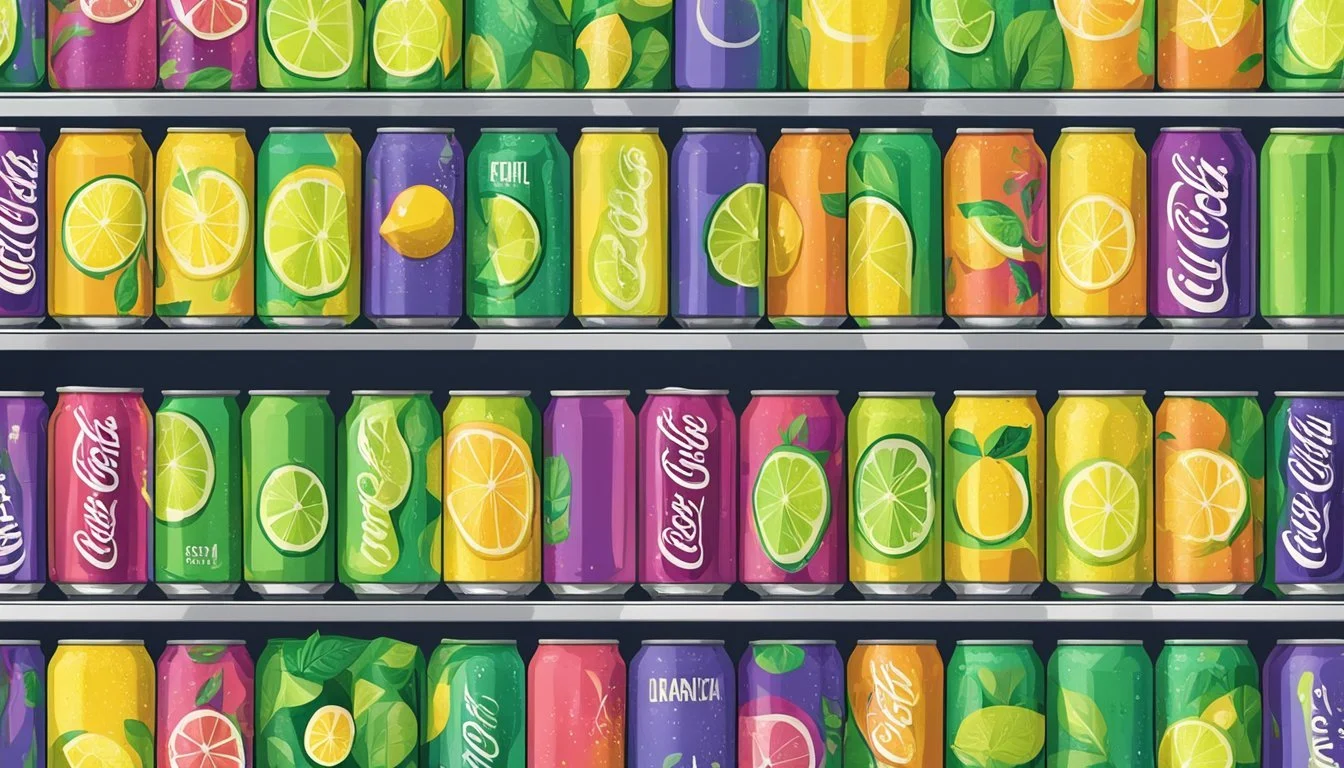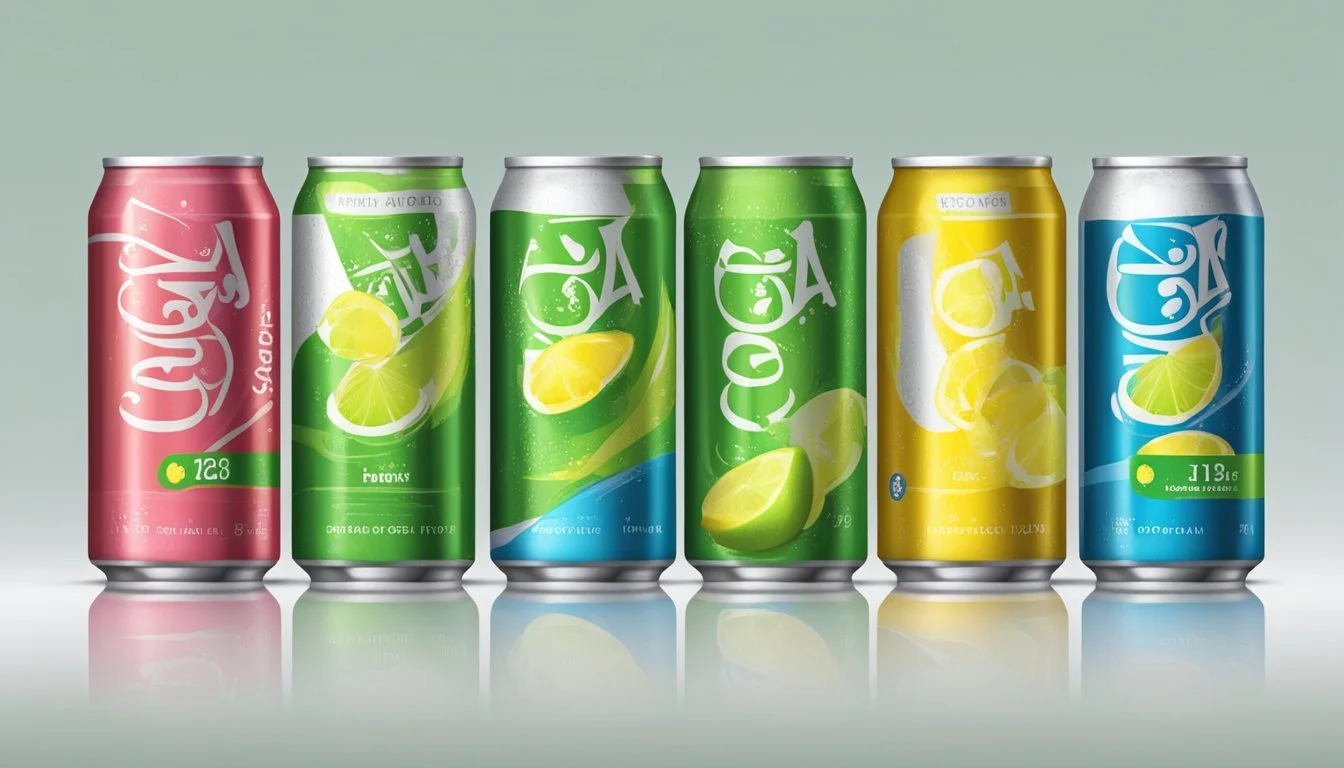Does Lemon-Lime Soda Go Bad?
Shelf Life and Storage Tips
Lemon-lime soda is a popular carbonated beverage known for its refreshing taste. Yes, lemon-lime soda can go bad, but it doesn't spoil in the same way perishable foods do. The drink can lose its carbonation and flavor over time, especially if the container is not sealed properly. As a result, drinking flat soda can be an unpleasant experience, devoid of its signature fizz and zest.
When stored in proper conditions, such as in a cool, dark place, an unopened bottle or can of lemon-lime soda can last for a significant period. However, once opened, the exposure to air speeds up the process of losing carbonation. This is why it's essential to keep opened soda in the refrigerator and consume it within a few days to enjoy its taste at its best.
Understanding the shelf life and storage tips for lemon-lime soda can help ensure you enjoy the drink as intended. Knowing when your soda has gone flat or lost its flavor can save you from a disappointing sip.
Understanding Soda Composition
Lemon-lime soda primarily consists of specific ingredients and goes through a detailed carbonation process. Each element and step plays a crucial role in the taste, texture, and shelf life of the beverage.
Ingredients and Sweeteners
Lemon-lime soda typically contains water as the base ingredient. Sweeteners are fundamental to its taste. These can include high fructose corn syrup or cane sugar, both of which are caloric sweeteners. In diet versions, artificial sweeteners like aspartame or sucralose replace traditional sugars.
Natural flavors are added to achieve the distinct lemon-lime taste. To preserve freshness and enhance flavor, additives such as citric acid and sodium benzoate are commonly used. The exact list of ingredients can vary by brand, but the core components remain consistent to maintain the desired flavor profile and longevity.
Carbonation Process
The carbonation process involves saturating the soda with carbon dioxide gas under pressure. This process is essential as it gives the soda its characteristic fizzy texture.
Carbon dioxide dissolves more efficiently at lower temperatures. Thus, the soda is typically chilled before carbonation. The sealed containers keep the carbonation intact, ensuring that the fizzy experience is maintained until consumption.
Over time, carbonation can diminish, especially if the container is opened and exposed to air, leading to a flat taste. Proper storage is vital to retain carbonation and overall soda quality.
Proper Storage Conditions for Lemon-Lime Soda
Proper storage ensures that lemon-lime soda remains fresh and maintains its carbonation and taste. It's crucial to understand the differences between storing unopened and opened soda.
Unopened Soda Storage
Lemon-lime soda should be stored in a cool, dark place, away from direct sunlight and heat. Unopened cans or bottles are best kept in the pantry or a kitchen cabinet. Consistent temperatures below 75°F (24°C) help preserve the soda’s quality.
While soda cans can last up to a year from the production date, glass bottles maintain similar longevity. Plastic bottles, however, have a shorter shelf life, around three months past the production date. To avoid degradation in flavor and carbonation, it’s advisable to consume the soda within the suggested time frame.
Opened Soda Handling
Once opened, lemon-lime soda should be consumed or refrigerated immediately. Sealing the container tightly is essential to retain carbonation. Using the original cap for bottles or tightly covering cans with a lid helps maintain the fizzy texture.
For best taste, keep opened soda in the refrigerator at temperatures between 34°F to 40°F (1°C to 4°C). It’s recommended to consume the soda within 2-3 days to enjoy the best flavor and carbonation. During this time, avoid exposing the soda to frequent temperature changes, as this can further affect its quality.
Ensuring proper storage conditions for both unopened and opened lemon-lime soda enhances its longevity and maintains its refreshing qualities.
Shelf Life and Expiration Details
Lemon-lime soda can maintain its quality for a varying duration depending on whether it is opened or unopened. Understanding how to read expiration labels and assess the quality over time is crucial for ensuring the soda is safe to drink and retains its best taste.
Deciphering Expiration Labels
Expiration labels on lemon-lime soda bottles or cans usually include a "best-by" or "expiration date."
Unopened Soda: Typically, unopened lemon-lime soda retains its best quality for about 6-9 months past the printed date if stored properly.
Opened Soda: Once opened, it should be consumed within 2-5 days for peak quality.
Storing the soda in a cool, dry place before opening helps maintain its taste and carbonation. Refrigeration is recommended for opened soda to extend its shelf life.
Assessing Soda Quality Over Time
Assessing the quality of lemon-lime soda involves checking several factors:
Visual Inspection: Look for any changes in color or presence of sediment.
Smell Test: Discard if there is an off-putting or strange odor.
Taste Test: If the soda tastes flat or off, it’s an indication of declining quality.
Carbonation Check: Lack of fizz also signals it may no longer be at its best quality.
Consuming soda past its expiration date generally isn’t harmful but could result in a reduced flavor experience. Always consider these indicators to ensure the drink is still pleasant and enjoyable.
Changes in Lemon-Lime Soda After Opening
Opening a bottle or can of lemon-lime soda has two primary effects: the loss of carbonation and changes in flavor and taste. These alterations can significantly impact the quality and enjoyment of the beverage.
Loss of Carbonation
Once lemon-lime soda is opened, it begins to lose its carbonation. Exposure to air allows the dissolved carbon dioxide gas to escape, leading to a flat texture. This process happens relatively quickly and can render the soda less enjoyable. The initial fizziness diminishes within hours, especially if the soda is left at room temperature. Consuming an opened soda that has been stored in the fridge can slightly delay this effect but won't prevent it entirely.
Flavor and Taste Alterations
Opening lemon-lime soda also brings changes to its flavor and taste. As the carbonation dissipates, the balance between the sweeteners and acidic components shifts. The soda may taste noticeably less sharp and refreshing. Additionally, the exposure to air can result in the oxidation of certain ingredients, which may lead to minor off-flavors. These taste alterations are more pronounced if the opened soda is left out for extended periods, particularly at room temperature. Storing it in a sealed container in the refrigerator can help mitigate some of these changes, but the freshness will still diminish over time.
Health Considerations Related to Soda Consumption
Soda consumption impacts both immediate digestive processes and carries long-term health risks. Readers should be mindful of these effects when incorporating soda into their daily routine.
Impact on Digestion
Sodas can significantly affect digestion. The high sugar content in regular soda can lead to bloating and gas, disrupting normal digestion. Diet soda, although sugar-free, may still cause digestive issues due to artificial sweeteners.
The carbonation in sodas can increase stomach acid production, potentially leading to heartburn and acid reflux. Hydration might be compromised because sugary sodas do not quench thirst effectively compared to water.
Constipation can also be exacerbated by soda consumption. The caffeine and sugar can lead to dehydration, making stool harder and more difficult to pass.
Long-Term Health Effects
Daily consumption of soda has several long-term health effects. Heart disease is a major risk, as the high sugar content in regular soda contributes to increased cholesterol and blood pressure. Contributing to obesity, soda is linked to various metabolic disorders.
Type 2 diabetes risk is heightened with regular soda intake due to insulin resistance caused by frequent spikes in blood glucose levels. Diet sodas are not completely risk-free either; some studies suggest a potential link to weight gain and metabolic syndrome.
Tooth decay is another concern, as sugar and acidity from soda erode enamel, leading to cavities. Cutting down on soda can significantly reduce these health risks.
Identifying and Preventing Spoilage
Lemon-lime soda, like other carbonated beverages, can spoil over time. Recognizing signs of spoilage and taking measures to prevent contamination are crucial for maintaining its quality.
Visual and Olfactory Indicators of Spoilage
Visual and olfactory indicators are key in identifying spoiled lemon-lime soda. Off odor is one of the most noticeable signs. If the soda smells sour, musty, or unusual, discard it immediately.
Look for changes in appearance. Cloudiness, floaters, or sediment can indicate bacterial or mold contamination. Another common indicator is a change in color; any deviation from its usual clear or slightly cloudy look suggests it may be spoiled.
Carbonation loss is another factor to consider. If the soda appears flat or has significantly fewer bubbles than usual, it may be past its prime.
Preventing Contamination and Mold Growth
Preventing contamination and mold growth in lemon-lime soda starts with proper storage. Always keep the soda in a cool, dark place, and refrigerate after opening. Use airtight containers to limit exposure to air which can lead to oxidation and spoilage.
Avoid cross-contamination by ensuring that utensils and containers used for transferring soda are clean. Store away from strong odors, as soda can absorb them over time, affecting its taste and smell.
Check the expiration date before consumption. Consuming expired soda can increase the risk of ingestion of bacteria or mold. Maintaining good hygiene and storage practices can significantly extend the drink's shelf life and preserve its quality.
Special Cases in Soda Preservation
Lemon-lime sodas, like all carbonated beverages, have specific conditions that can affect their quality and shelf life. One crucial aspect of soda preservation to consider is the impact of freezing.
Effects of Freezing on Soda
When lemon-lime soda freezes, it undergoes several changes that can negatively affect its quality. Water Expansion: As the water in the soda freezes, it expands, potentially causing the container to burst or leak. This can be particularly problematic for cans and plastic bottles.
Loss of Carbonation: Freezing and subsequent thawing often result in significant loss of carbonation, leaving the soda flat. This flatness diminishes the soda's taste and mouthfeel, which are key to its appeal.
Altered Flavor Profile: The freezing process can also affect the flavor components of the soda. Natural or artificial flavorings may degrade at sub-zero temperatures, altering the taste of the thawed beverage.
Freezing is generally not recommended for preserving lemon-lime sodas. Proper storage in a cool, dry place will better maintain its carbonation and flavor integrity.
Comparative Longevity of Soda Varieties
Soda shelf life varies based on several factors, including whether the soda is diet or regular and the specific brand. Different varieties such as cola, lemon-lime, and root beer also have distinct longevity characteristics.
Differences Between Diet and Regular Sodas
Diet sodas tend to have a shorter shelf life than regular sodas. This is due to the presence of artificial sweeteners, which can break down faster than sugar. For instance, aspartame, a common sweetener in diet sodas, degrades more quickly over time.
Regular sodas, including cola and lemon-lime varieties like Coca-Cola and Sprite, generally maintain their flavor and carbonation longer. This is because high-fructose corn syrup and other sugars are more stable ingredients.
The presence of preservatives also influences longevity. Diet sodas with fewer preservatives will spoil faster when opened compared to their regular counterparts.
Variation Across Soda Brands
Brand reputation and formulation influence soda longevity. For example, Coca-Cola and Pepsi are known for their robust preservation methods, often leading to a longer shelf life.
Specialty sodas such as Mountain Dew and root beers may have unique ingredients that affect their longevity, sometimes resulting in shorter shelf lives. Lemon-lime sodas from niche brands can vary widely, with some formulations staying fresh longer due to their proprietary mix of preservatives and carbonation levels.
Brands like Health-Ade Lemon Lime Prebiotic Pop and Culture Pop employ different ingredients focused on health benefits, which can also affect how long they last compared to more traditional sodas.
Packaging Influence on Lemon-Lime Soda Lifespan
The lifespan of lemon-lime soda significantly varies based on its packaging. Factors such as material and airtight seals determine how long the soda remains fresh and carbonated.
Bottles Versus Cans
Bottles: Lemon-lime soda packaged in bottles, especially glass bottles, often maintains its flavor for a longer period. Glass is non-reactive, meaning it doesn’t interact with the soda, preserving the taste better. However, plastic bottles may be more permeable, leading to quicker loss of carbonation.
Cans: Canned soda often has a slightly shorter lifespan than glass bottles. While the aluminum material provides an excellent barrier against light and oxygen, it can sometimes impart a metallic taste if stored for too long. Cans are also less likely to expand or contract compared to plastic bottles.
The Role of Seals in Preservation
The seal integrity of the packaging is crucial in prolonging the shelf life of lemon-lime soda. Sealed bottles and cans protect the soda from external contaminants and air, which can degrade its quality over time.
Bottles typically use screw caps, which can be resealed, but may not be completely airtight after the initial opening. This can lead to loss of carbonation if not consumed quickly. On the other hand, cans come with a one-time pull tab seal, ensuring maximum freshness until opened, but they cannot be resealed, making them better suited for single-use scenarios.



